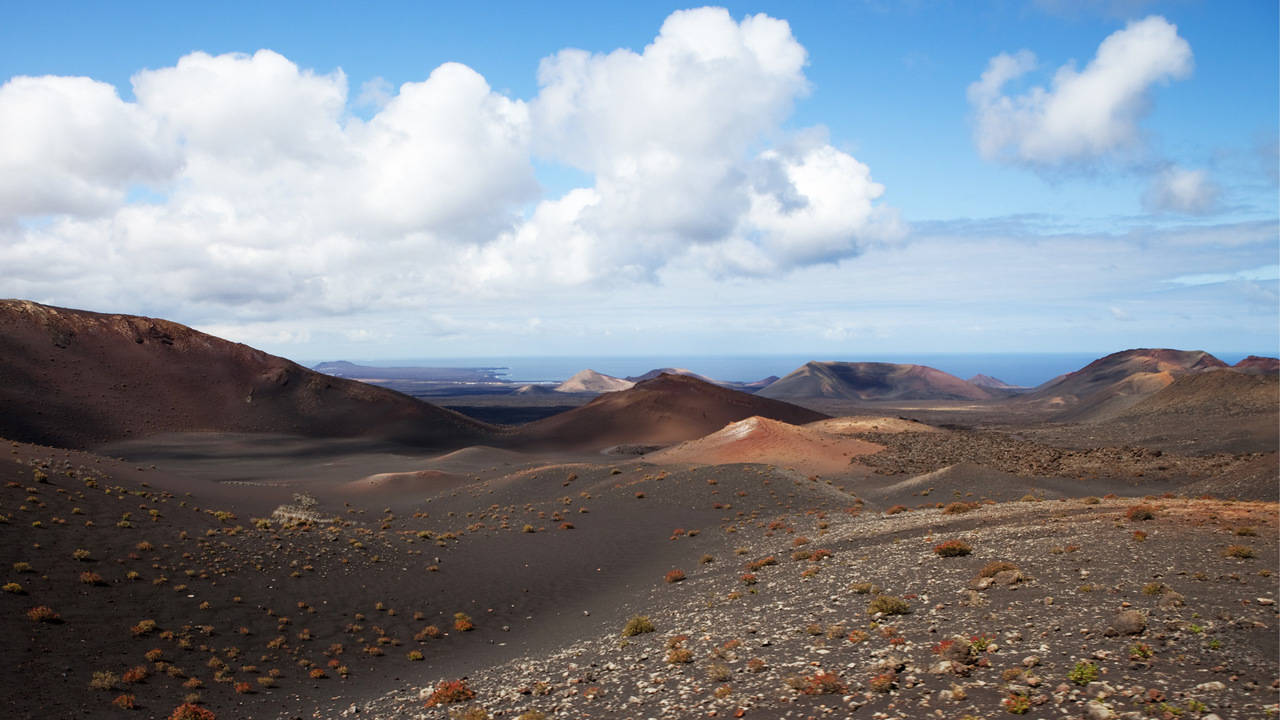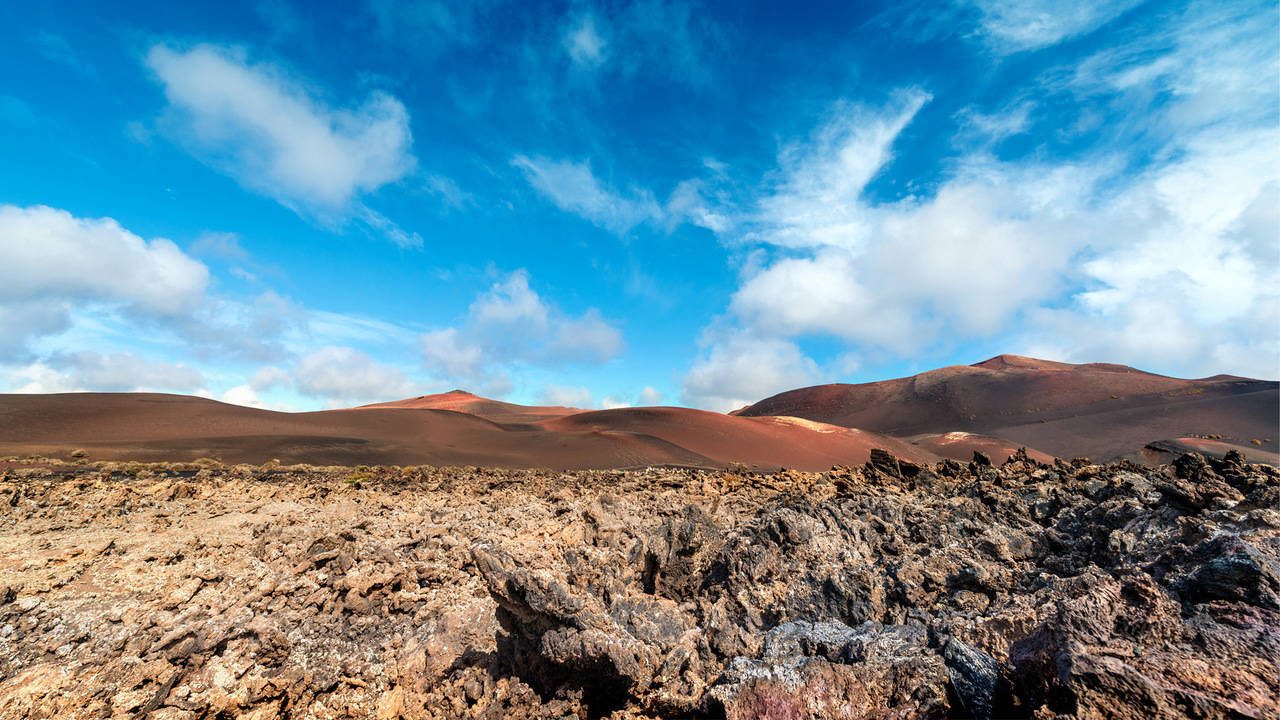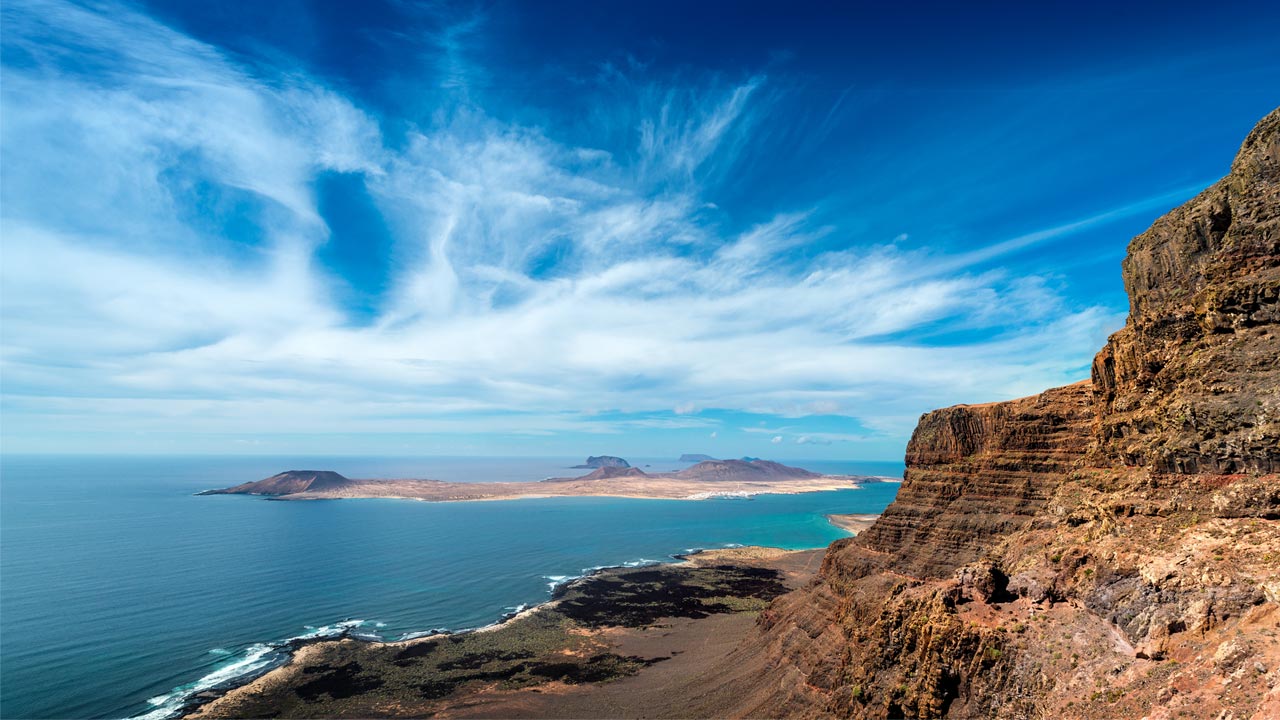Lanzarote is a Spanish island, the easternmost of the autonomous Canary Islands in the Atlantic Ocean. It belongs to the province of Las Palmas. Its capital is Arrecife.


It is located approximately 125 kilometres (78 miles) off the coast of Africa and 1,000 kilometres (621 miles) from the Iberian Peninsula. Covering 845.94 square kilometres (326.62 square miles), Lanzarote is the fourth-largest of the islands in the archipelago. With 141,938 inhabitants, it is the third-most populous Canary Island, after Tenerife and Gran Canaria. In the centre-west of the island is Timanfaya National Park, one of its main attractions. The capital is Arrecife.
The first recorded name for the island, given by Italian-Majorcan cartographer Angelino Dulcert, was Insula de Lanzarotus Marocelus, after the Genoese navigator Lancelotto Malocello, from which the modern name is derived. The island's name in the native language was Tyterogaka or Tytheroygaka, which may mean "one that is all ochre" (referring to the island's predominant colour).
As of 2010, 139,000 people live on Lanzarote, an increase of 9.4% from 2006 (127,000). The seat of the island government (Cabildo Insular) is in the capital, Arrecife, which has a population of 59,000. The majority of the inhabitants (73.9%) are Spanish with a sizeable number of residents from other European nations, mainly Britons (4.0%), Germans (2.6%), and Irish people (2.5%). Other populous groups include Chinese people, Colombians, Ecuadorians, Indians, and Moroccans, which constitute a large proportion of the remaining 15.6% of the population.
The island has an international airport, Arrecife Airport, through which 5,438,178 passengers travelled in 2008. Tourism has been the mainstay of the island's economy for over 40 years, the only other industry being agriculture.
Lanzarote is part of the province of Las Palmas, and is divided into seven municipalities:
- Arrecife
- Haría
- San Bartolomé
- Teguise (includes Isla de La Graciosa and four smaller islets, including Alegranza)
- Tías
- Tinajo
- Yaiza
